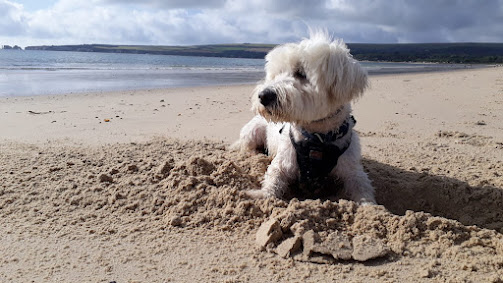Have you heard about ‘Borrow my Doggy’? In the UK, it’s connecting dog owners with dog-lovers who, for whatever reason, can’t make a full-time commitment to having a dog, but who want to fill the dog void in their life!
‘Borrow my Doggy’ connects dog owners with local dog borrowers for walks, weekends and holidays, finding trusted dog lovers who can spend time with owned dogs, helping out their owners whilst getting all of the fun and love from a ‘part-time doggy’! For dog owners, it can help remove the worry of not being with their dog all the time, knowing that the dog borrower is able to provide quality time, walks and fun. It’s a win-win for the dog, their owner and the borrower!
Here’s a real-life story about how it has worked brilliantly for Jane from Dorset. She is a full-time solicitor with a busy social life, and so doesn’t have the time to have a ‘full-time’ dog at present. However, as a dedicated dog lover, she found the perfect solution through ‘Borrow my Doggy,’ as she explains:
“For a while I’d been wanting my own dog but knew this was impractical, whilst working full-time. My cousin in London recommended ‘Borrow my Doggy.’ I looked on the website for a dog close to my home and, straightaway, there was Percy – an adorable Coton de Tulear – looking for walks and company when his owners are at work. I didn’t need to look any further!
Percy soon arrived for his first walk and, of course, I was immediately smitten. He made himself at home, exploring and generally getting his bearings before jumping onto the passenger seat of my car to have his seat belt secured for a drive to my favourite beach. He was in his element there. That was 6 years ago and we’re still enjoying wonderful walks. Just to see his excitement at reaching the sand, and his exuberance as he races along the beach is so uplifting.
Percy enjoying Jane’s local beach
One of the best things about Borrow my Doggy is its flexibility. It works well for Percy, his owners and for me. It also helps that Percy is local. This is important to me as it’s easier for last minute arrangements to be made for a walk or the occasional ‘sleepover’ if his owners are away for the weekend. There’s no set pattern.
It comes with its responsibilities. I’m always very aware when out walking Percy that he is someone else’s dog and I’m careful about where I let him off the lead. I’ve got to know and love his personality. He’s so expressive and I can tell when he’s considering a ‘bolt’ along the beach!
We’ve got quite a bond now. For me, Borrow my Doggy is the perfect arrangement. I would recommend it to anyone who likes the outdoors and walking. Percy has exceeded all my expectations and I can’t believe how lucky I was to find him.”
.....and relaxing after his exercise!
It’s heart-warming to hear how much both Jane and Percy enjoy their time together. They wouldn’t have been able to meet without ‘Borrow my Doggy’ introducing them and now have the perfect arrangement.
If you’re based in the UK and would like to find out more, as a potential borrower or owner, visit Borrow my Doggy’s website.






.jpg)


.jpg)














